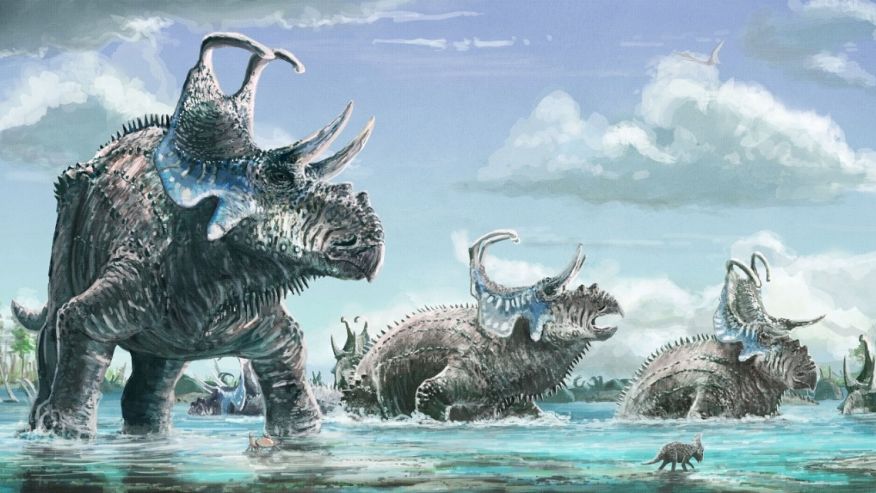Scientists have added another dinosaur species to the prehistoric catalog, and this one was found in present-day Utah.
Researchers working in Grand Staircase-Escalante National Monument discovered the new species of dinosaur— a large, horned, herbivorous creature that could have been anywhere from 19 to 26 feet long and weighed in at one to two tons. It took them three field seasons to excavate the fossils.

The dinosaur, named Machairoceratops cronusi, is thought to have lived about 77 million years ago. It’s uncommon for a dinosaur of this type to be discovered in this region of the United States, as usually their fossils are found in places like Alaska and Montana.
“Even in a place like western North America, where intense work has been conducted over the past 150 years, we are still finding species new to science,” Patrick O’Connor, a coauthor on the study reporting the find, said in a statement.
This dinosaur dwelled during the Cretaceous Period in a part of North America that scientists call Laramidia, which was to the west of a sea that divided the continent. This new discovery, found in southern Laramidia, is different from dinosaurs from the same group found in the northern part of Laramidia, suggesting that these dinosaurs lived in two different regions and thus comprised two sub-groups that were shaped differently by evolution.
Dinosaurs in this group, called Centrosaurine ceratopsids, had horns, beaks, and neck shields.
“Machairoceratops is unique in possessing two large, forward curving spikes off of the back of the neck shield, each of which is marked by a peculiar groove extending from the base of the spike to the tip, the function of which is currently unknown,” Erik Lund, one of the researchers involved in the discovery, said in a statement. By Rob Verger





